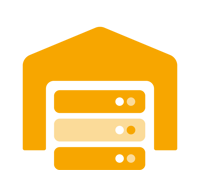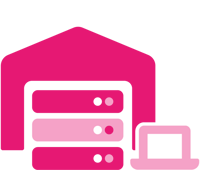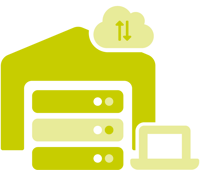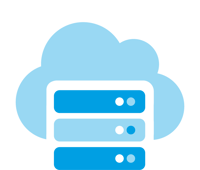 With the shift to remote working continuing and decisions on the best solutions becoming a major focus in order to overcome the changes and challenges ahead it is more important than ever to understand the options available in terms of your technological infrastructure and what this means for your workflow and your team, whether they are based on site or working remotely.
With the shift to remote working continuing and decisions on the best solutions becoming a major focus in order to overcome the changes and challenges ahead it is more important than ever to understand the options available in terms of your technological infrastructure and what this means for your workflow and your team, whether they are based on site or working remotely.
The Tharstern MIS is ready and able to adapt with your changing needs and can be deployed in a number of ways to suit your business. You could opt for an entirely cloud hosted solution, install it locally at your site, or even go for a hybrid approach. Rest assured, our MIS will work seamlessly with any approach, offering the same functionality, performance and experience throughout.
There isn't one “right” position or strategy to aim for, it's entirely down to your company's needs. Here are the options and the pros and cons of each:
Option 1 - Ad-Hoc Remote Access
 Suitable for smaller businesses with a very small budget, limited access to IT services or where staff have multiple site-based responsibilities and would only occasionally need to work from home.
Suitable for smaller businesses with a very small budget, limited access to IT services or where staff have multiple site-based responsibilities and would only occasionally need to work from home.
Users can access Tharstern remotely by connecting to their on-site desktop using free or low-cost tools such as LogMeIn, Chrome Remote Desktop, AnyDesk, and TeamViewer.
Pros
- This solution is easy to set up and can be achieved with free/cheap software.
Cons
- Users will either have to use their own equipment or their organization will have to buy a laptop along with their desktop. The opposite is true for those office users who work normally with laptops – because they do not have a machine to connect to if they take their laptop home, a desktop needs to be set up for them.
Option 2 - Local First
 Suitable for mid-sized businesses with limited internal IT, who require periodic but reliable remote access for remote workers, office workers and execs.
Suitable for mid-sized businesses with limited internal IT, who require periodic but reliable remote access for remote workers, office workers and execs.
Production and other essential business applications remain on premise, but remote access is gained via a dedicated Remote Desktop Server, possibly using spare capacity on virtual server hosts. Connectivity is secured by RDS Gateway and/or VPNs.
Pros
- A server-based solution provides more control over the user environment and experience.
Cons
- Users still need to use their own equipment to access the system remotely and then use their desktop when in the office (except for those with laptops who connect to the Remote Desktop Server wherever they're working).
Option 3 - Local Cloud
 Suitable for multi-site businesses, those with a high percentage of field based/remote workers, and those with some centralized IT.
Suitable for multi-site businesses, those with a high percentage of field based/remote workers, and those with some centralized IT.
In this scenario Remote Desktop Services or a Citrix XenApp farm are used as the default delivery mechanism from either on-premise / head office or private data centre. All users regardless of location connect into host-based sessions for their applications.
Pros
- Allows a more varied choice of client system across the business – Windows, Mac, Linux – and so BYOD (Bring Your Own Device) becomes possible with lowered risk.
- Users do not need separate office / home machines, so laptops can be issued throughout, and users can run enterprise applications from anywhere.
Cons
- higher budget required than previous options.
Option 4 - Cloud Now
 Suitable for any sized business working with an IT partner or Managed Service Provider to facilitate.
Suitable for any sized business working with an IT partner or Managed Service Provider to facilitate.
Similar to local cloud above but hosting is outside of the business at either a public or third party-based data centre – usually offering high levels of availability and security.
Pros
- Cloud-to-site connectivity via VPN can provide secure and seamless access regardless of user location.
- Provides high flexibility for seasonality, project roll out and rapid deployment of systems for new initiatives.
Cons
- Constant monthly cost over CapEx / hardware assets.
If you're trying to work out which option is best for you, we can help. Our team of experts have all the information you need to evaluate each approach in more detail and work out what the right solution is for your company.